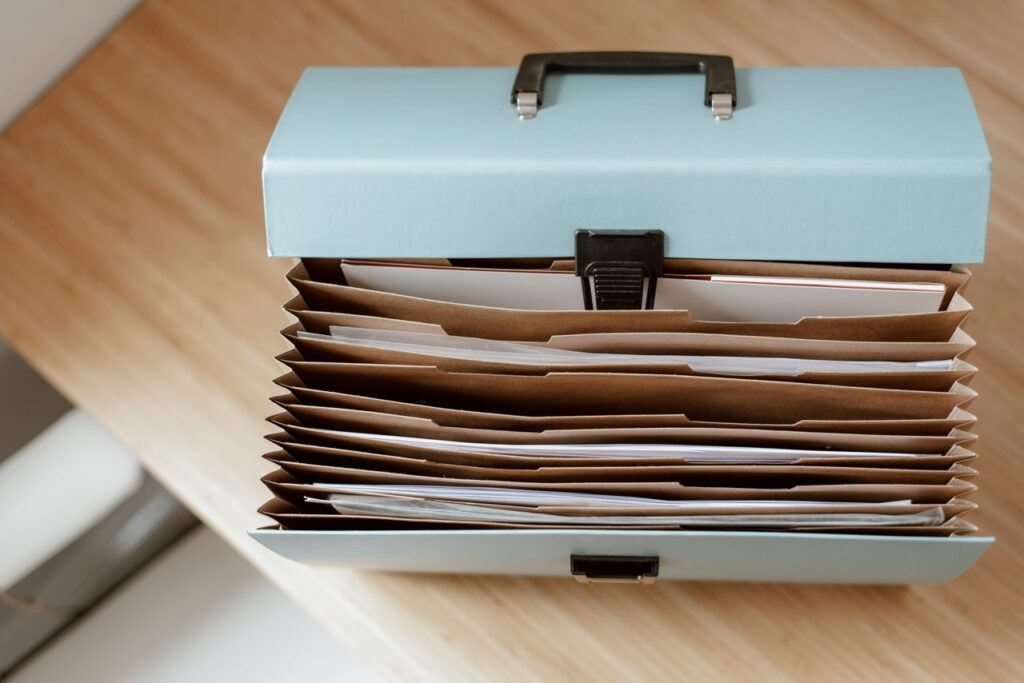We are in the middle of spring when many schools are nearing the end of their semester. Combine these two things, and you get the perfect time for cleaning out and organizing your office space and music library.
I love organizing things – I always have. I was the kid who loved separating out the giant tub of assorted Perler Beads (remember those?) by color. When I was two, I took out all my books on the shelf and organized them by size. In my high chair, I picked out the green beans from my mixed veggies and lined them up on the edge of the tray.
Today my passion for organization has trickled over into the systems I use to track and manage my music and how I keep my office. I’ve also enjoyed helping other people and schools create systems to easily keep track of what they have, and I’m assuming you’re here because you wouldn’t mind some tips either :).
If you’re starting from scratch, I recommend first setting a budget on how much you want to spend on office supplies because it’s easy to get carried away. Think about how much music and space you have. Are you looking to completely refresh your space, or just hoping to find a way to get those piles to go (and stay) away? Either way, creating a budget is a good place to start.
1. Put things away right away, not later.

Leaving things out creates piles. Piles create clutter. Clutter creates chaos. It also saves your music from potential coffee spills, accidentally swiping your elbow across the table and hitting the pile, causing music to fly everywhere, and so on.
2. Create an inventory list of the music you own or oversee, and allow it to be easily accessible.
My inventory list exists in a Word doc on my computer, and I update it every time I receive a new piece of music. It’s also helpful if you keep track of the edition of the piece, its condition (is that old hand-me-down concerto usable?), and its instrumentation, if applicable.
3. Find a filing system that works for you and stick to it.

Make sure you pick a system that won’t damage your music and won’t waste space. Also, pick a system that allows you to find items easily. Think about categories – do you have them? How specific are your categories? Is it just “solos” or is it unaccompanied solos, solos for flute and piano, solos for flute and electronics, etc.? Think about the order of categorization – is it alphabetical or numerical? If a piece is arranged, does it go under the composer’s name or the arranger’s name? Do you separate things by period? Remember to pick a system that has room for growth – make sure it will still work five years down the road when you own 50 more pieces.
The ultimate test of choosing a logical system is asking someone else to take a look – if they can easily find a specific piece without your help, you’ve implemented a great system. If they can’t, you may want to reconsider how you’re organizing your music.
4. Put loose-leaf music in a binder or folder.
You don’t want hundreds of sheets of paper flying around, getting all crumpled and bent in the bottom of a filing cabinet. All those loose-leaf etudes can be put in one binder, and all those warm-up exercises you found on the internet can go in another. You can get really fancy and use binder tabs to separate one piece from another.
5. Keep the materials you’re currently using in a separate place.

Instead of having a giant pile on your desk of all the music your students are working on, perhaps you could have a desktop filing organizer or a drawer in your desk with one folder for each of your students (and one for yourself).
What does this look like in practice?
I currently have two filing cabinets and different colors of folders for each category. Solos (unaccompanied, accompanied, those with electronic tracks etc.) are all in dark green folders, organized by the composer’s last name. Technique books are in blue folders, solo collections that have various composers are in purple folders (my inventory list also notes which solos are included in each collection), etudes are in yellow folders, comprehensive method books are in red folders, Christmas music is in bright green folders, and duets are in orange folders. These categories are also all organized by composer’s last name (the collections are by arranger/editor).
If you end up using a bookshelf, consider purchasing some dividers to separate out composer’s names and bookends to keep your music from falling over the shelf isn’t full.
Conclusion
Getting started will take some time. Creating that initial inventory list (especially if you haven’t already) might seem like a daunting and mundane task. But I PROMISE it will be worth it in the future when you find yourself at the music dealer’s booth at the convention you attend wondering “do I already own this piece?” It will be worth it when you get into the habit of putting things away right away instead of looking at the three-foot high pile on your desk at the end of the semester and wondering where it will all go.
This time of year is a great time to get organized before taking some time off or jumping into your next big project, so let the organizing and cleaning commence!
1 Comments
Leave a Comment
You must be logged in to post a comment.

[…] P.S. If you need more tips on organization, head to this blog. […]